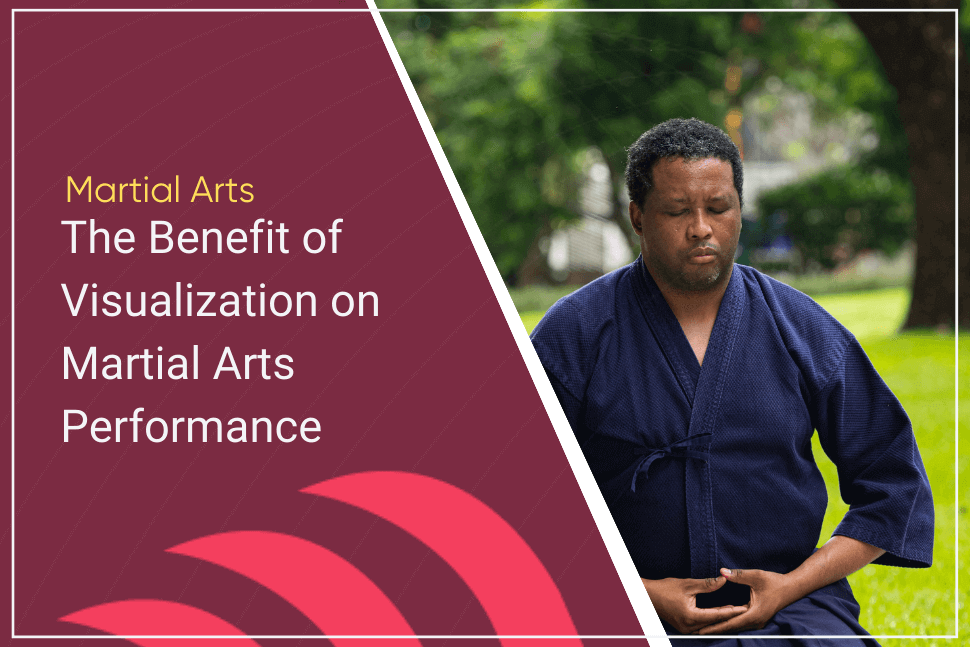Being able to do something in your head dramatically improves the odds of being able to do it in real life. Not only is visualization widely discussed in the field of psychology, but it is also used by people from all walks of life, including business professionals and athletes of every sport.
What is Visualization?
Visualization is a form of meditation where you create vivid mental images of problems in your head in an attempt to solve them, which can lead to a sense of confidence, motivation, and many other benefits. The purpose of visualization is to facilitate the improvement of one’s skill set for their respective sport or activity.
Visualization works through a process known as guided imagery, which is something that you have probably practiced anyway when you are trying to relax and go to sleep. Guided imagery is as simple as imagining yourself sitting on a beach, but with vivid details surrounding you. Sitting in a lounging chair on the soft, golden sand on a hot day with a cool breeze blowing. Calm waves flow in and out a few feet away from you while the sound of seagulls can be heard in between each interval. A thick, verdant jungle filled with tall trees and mystery sits behind you. All of these vivid details play an integral role in the effectiveness of guided imagery.
Visualization is not the same as imagining a future conversation with someone. We have all visualized conversations in our heads, but those conversations never end up going the same way because of the unpredictability of human behavior. Sports are different because an athlete’s movements are based on a set of rules, therefore greatly reducing unpredictable behavior.
Just about every serious athlete utilizes visualization through guided imagery to improve their performance, such as a basketball player visualizing free throws or a wide receiver running routes and catching passes. Martial artists are no different. I have used visualization techniques to improve my game ever since I began training in mixed martial arts (MMA) fourteen years ago. I go over what I did right and wrong and what needs to be done for improvement after every training session.
Even to this day, I spend time visualizing different scenarios in jiu jitsu and striking and will often catch myself shadowboxing and moving my head as if punches were being thrown my way while waiting for the microwave to beep. It is an exercise that works better with time and carries many personal benefits.
Discover New Techniques
When I first started training in MMA, I was going through the various movements of the guard position in jiu jitsu because my submission knowledge was basically limited to a kimura, arm bar, and guillotine choke. After carefully visualizing realistic movements in my head, I came up with an already existing shoulder lock that has a better name than I could have ever come up with on my own: the omoplata.
There are countless submissions in jiu jitsu, and visualization is a great way to get creative and come up with new techniques. This is one of the main reasons why the sport of jiu jitsu continues to evolve so quickly.
Assists with Motivation
There have been countless times that I wished I had a mat and a training partner a few hours after an intense training session because I would be going through my mistakes or missed opportunities in my head. Visualizing techniques makes you want to practice them as soon as possible while they are fresh in your mind. The more you visualize techniques in your head, the more eager you are to get in the gym and see if it works.
Enhances Performance
Visualization works like a natural performance-enhancing drug. The more you go over certain moves in your head, the more indelible in your mind they become. Take shadow boxing for example. As I am standing in front of the microwave waiting for my pasta to heat up, I am throwing punches at an imaginary target and moving my head the way I would react if punches were being thrown at me.
But I am not just focused on dodging imaginary punches, I am also taking my time to analyze any potential vulnerabilities that my invisible opponent may have while doing so. This allows me to become a better counter puncher and to also keep my timing and reflexes sharp if I happen to take some significant time off in between striking sessions.
Builds Confidence
Visualizing solutions to a problem helps you gain confidence that the same mistakes will not be made again. The more you go over each move in detail, the more indelible in your brain it becomes. Once you are able to apply it in practice consistently, your confidence grows because you were finally able to find a solution to your problem.
Clears and Organizes Your Mind
Mental visualization practice helps clear your mind of the problems that were keeping you distracted and awake at night. I have trained in many jiu jitsu gyms across the United States and Europe, and a lot of the time I had to adjust to the different styles that were taught at each particular gym. I would spend some time before the next training session going over ways in which I could properly counter the new styles that I was facing.
Doing those visualization exercises helped declutter my mind so I could divert more attention to other, more productive things throughout the day.
Relieves Stress
Relieving stress is a precursor to building confidence. As you begin to successfully implement visualization techniques into your training regimen, you will have better peace of mind because you are solving the problems that were the cause of stress in the first place.
Improves Overall Mood
Since visualization techniques are a form of meditation, it is only natural that happy moods follow when the visual exercises were successfully performed in the gym. The time spent solving the problem was not wasted, and you grew as a person and as an athlete.
Improves Memory
As previously mentioned, visualization techniques end up becoming indelible in the mind the more they are used. Even though the brain is an organ, it still functions as a muscle in the way that it will begin deteriorating if it is not used to think critically on a consistent basis. People who read generally possess better memories than those who do not, and visualization techniques work in the same manner.
The brain is not the only type of memory that visualization techniques improve, though. Your muscle memory also improves, sometimes to the point where it feels like you snuck in several training sessions in between your normal training routine.
Conclusion: Exposure Leads to Better Visualization
Sometimes our imaginations can come up with slightly unrealistic scenarios, but visualization gets better with experience as we learn what is realistic and what is unrealistic. More experience exposes you to more realistic scenarios that come into play during the visualization process, causing the guided imagery to become much more vivid and strategic.
Experience also comes in many forms. Attending as many classes as possible is by far the best way to gain experience, but also exposing yourself to as many televised fights and instructional videos all play an integral role as well.
Utilizing visualization techniques using guided imagery is an almost necessary exercise if you want to improve your skills in martial arts. It can provide you with many benefits that lead to improved skill sets and increased confidence. There is a reason that I and many other athletes use it, and that is because it works.
 Gym Owner Statistics: The State of Gyms, Member Trends, and Usage Data
Gym Owner Statistics: The State of Gyms, Member Trends, and Usage Data




